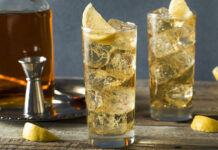Operators can capitalise on the burger success story

HISTORICALLY, burgers have been associated with quick, affordable fast-food – but no more.
Not only has the burger’s image undergone a significant transformation – moving away from traditional fast-food venues to feature on many high-end restaurant menus – for many operators, the burger has become a cornerstone of their food offer.
But how did it get here?
It seems a multitude of factors can be attributed to the shift.
Niall Deveney, of wholesaler Dunns Food & Drinks, credited a major step up in the quality of ingredients used in today’s burgers with playing a major role, saying that many operators are “using great ingredients and improving the quality of the contents of the burger bun to the best it can be”.
Deveney also highlighted the growth of social media, which he said has helped operators spread the word about their food offers “whilst simultaneously everyone and their dog has [become] self-certified foodies”, and consumers seeking to eat out at more affordable prices post credit crunch as contributing to the changing image of the burger.
“The transition of the burger is partly down to timing – it has benefited from a number of factors aligning,” he said.
Echoing this view, Shaune Hall of Falcon Foodservice Equipment said the introduction of new ingredients, recipes and ‘food styling’ has helped the burger to ditch its old image.
“With this modern turn of events, the greasy spoon label has disappeared, replaced by a quality, healthy and trendy menu item,” said Hall.
Both Hall and Deveney agreed that the burger’s appeal is generally universal – and that pubs are particularly well-placed to tap into the growing demand.
“They are more likely to be able to offer the best burger around, as they are better-positioned to work with a quality provider of ingredients than larger chains,” said Deveney.
And, with quality the bedrock of a good burger, it is vital that operators don’t skimp on ingredients, said Hall of Falcon Foodservice Equipment.
“There are no substitutes for quality ingredients to deliver an excellent burger,” he said.
“The rules are: keep it fresh, keep it simple, cook it well and serve it hot.”
The growing popularity of the ‘better burger’ is reflective of higher consumer expectations, reckons Deveney of Dunns Food & Drinks, who said “people want fresh, real food”.
“It’s important to meet this expectation as burgers are a very simple thing, but this accessibility means that consumers can see and taste the serving on its merits,” he said.
“Even a gourmet burger is cheap to make and offers great margin opportunity.”
Toppings and additions are also important considerations, with Deveney of Dunns Food & Drinks noting that customers “are looking for a greater selection” nowadays.
“The usual suspects are still popular and will continue to be – cheese, bacon, etc. But operators are also giving them new twists, whether it be changing to artisan cheese or something else,” he said.
This was echoed by Billy Kevan, dairy manager at Colston Bassett, which produces Stilton blue cheeses, who said a burger with a blue cheese topping “is a classic pairing”.
Emma Macdonald, founder of sauce/relish firm The Bay Tree said demand for global cuisine “has seen spicy, smoked and chilli flavours” in vogue.
She added: “From posh ketchup, Himalayan salt-aged meats to charcoal buns – the focus is on using top quality ingredients.”
Erwan Inizan of bakery brand, Bridor, said “it’s not just what’s inside the bun – it’s the bun itself that matters”.
Deveney of Dunns Food & Drinks agreed, stating that the burger bun “is no longer limited to a brioche bun – with everything from sourdough buns to pretzels on offer”.
Presentation plays a key role too, especially with younger consumers, who look for ‘Instagrammable’ dishes, according to both Hall at Falcon and Deveney at Dunns.
With this in mind, adding a ‘showstopper’ burger to the menu can be a “clever tool” to attract new customers, reckons Deveney.
“Often they can be seen as outrageous, capturing imaginations and making people likely to discuss them elsewhere,” he said.
[box style=”0″]
How to build a quality burger
- Grind your own beef or buy butcher’s mince with a good fat percentage.
- Whatever you put in to bind and flavour, make sure it complements rather than overpowers the burger.
- Chargrilling delivers a distinct flavour.
- Give the customer a choice of toppings, bread rolls and sides. Toppings can vary from the usual, such as bacon and cheese, to elaborate combinations and inventions, using ingredients such as pulled pork.
– Supplied by Falcon Foodservice.
[/box]



















